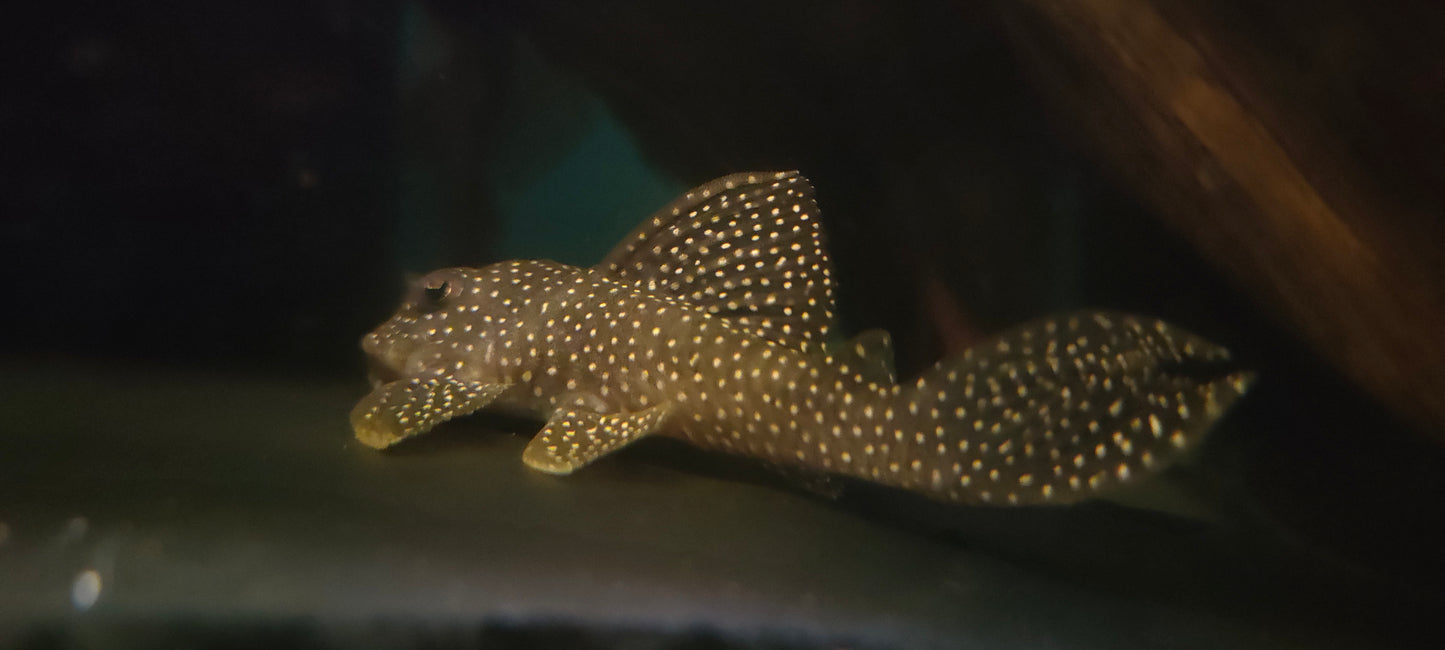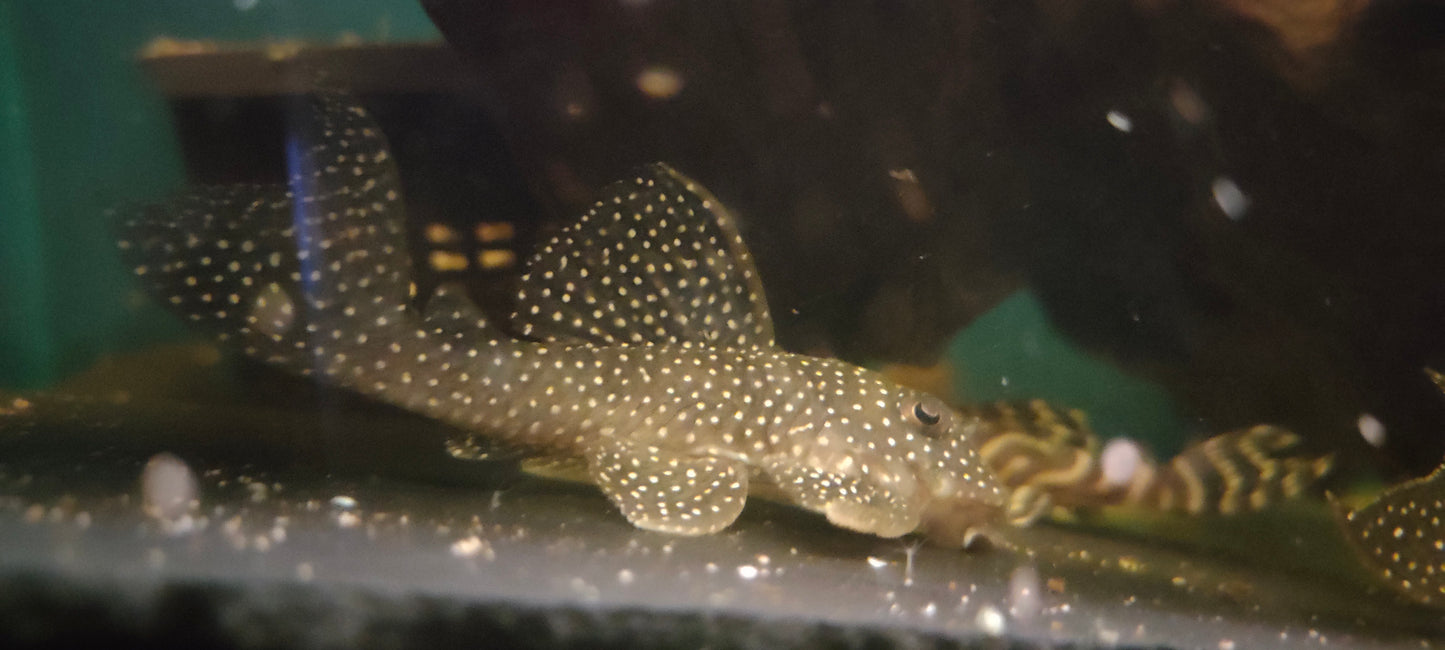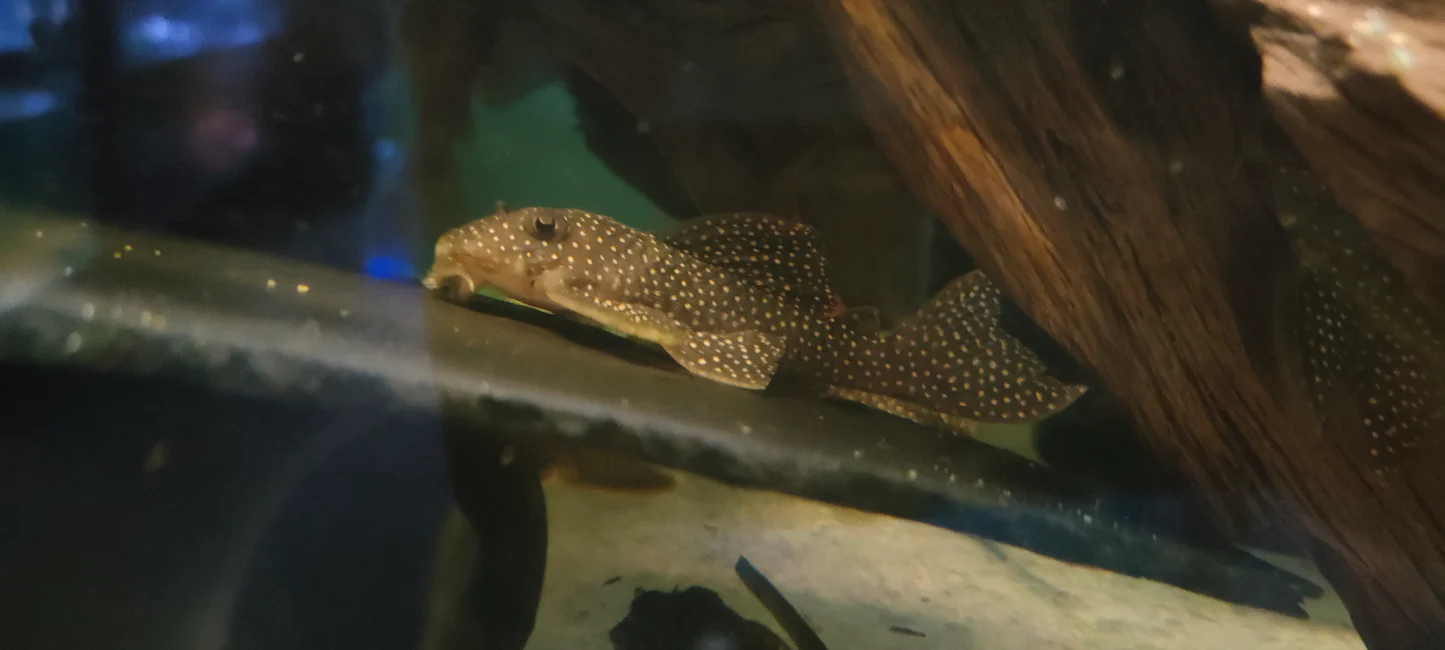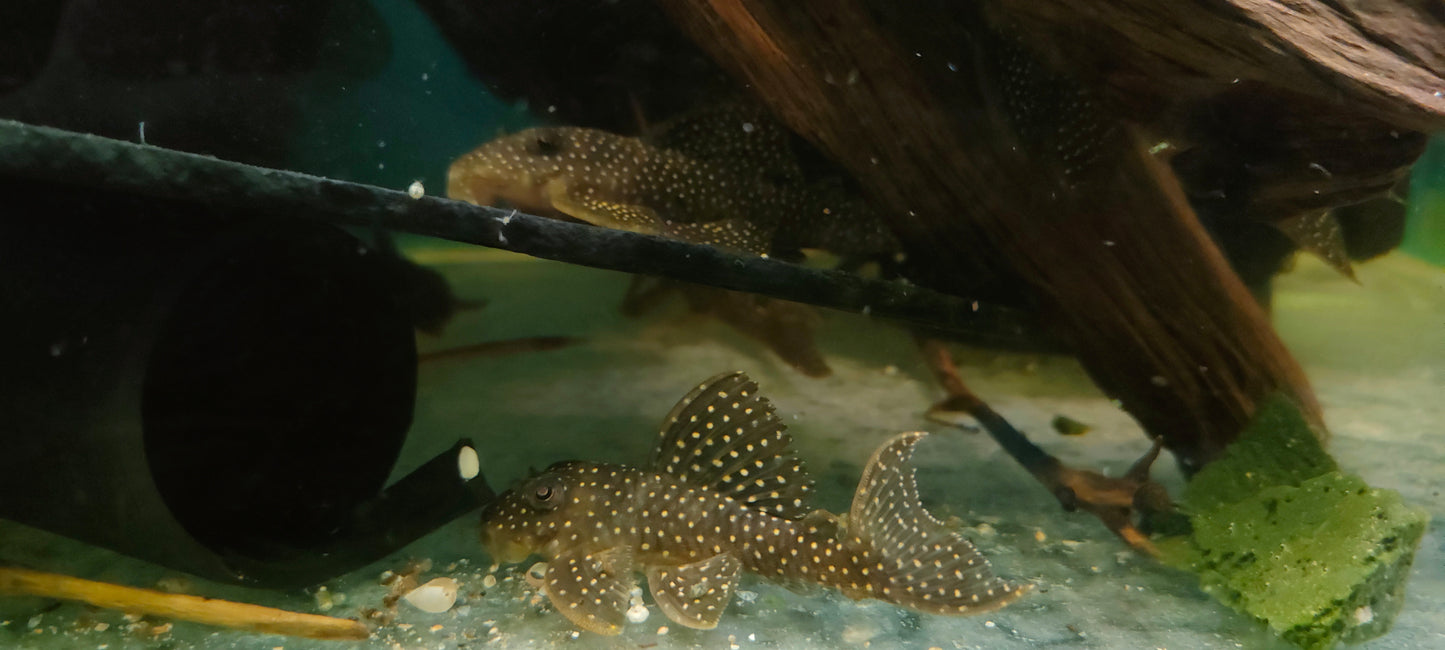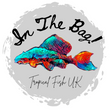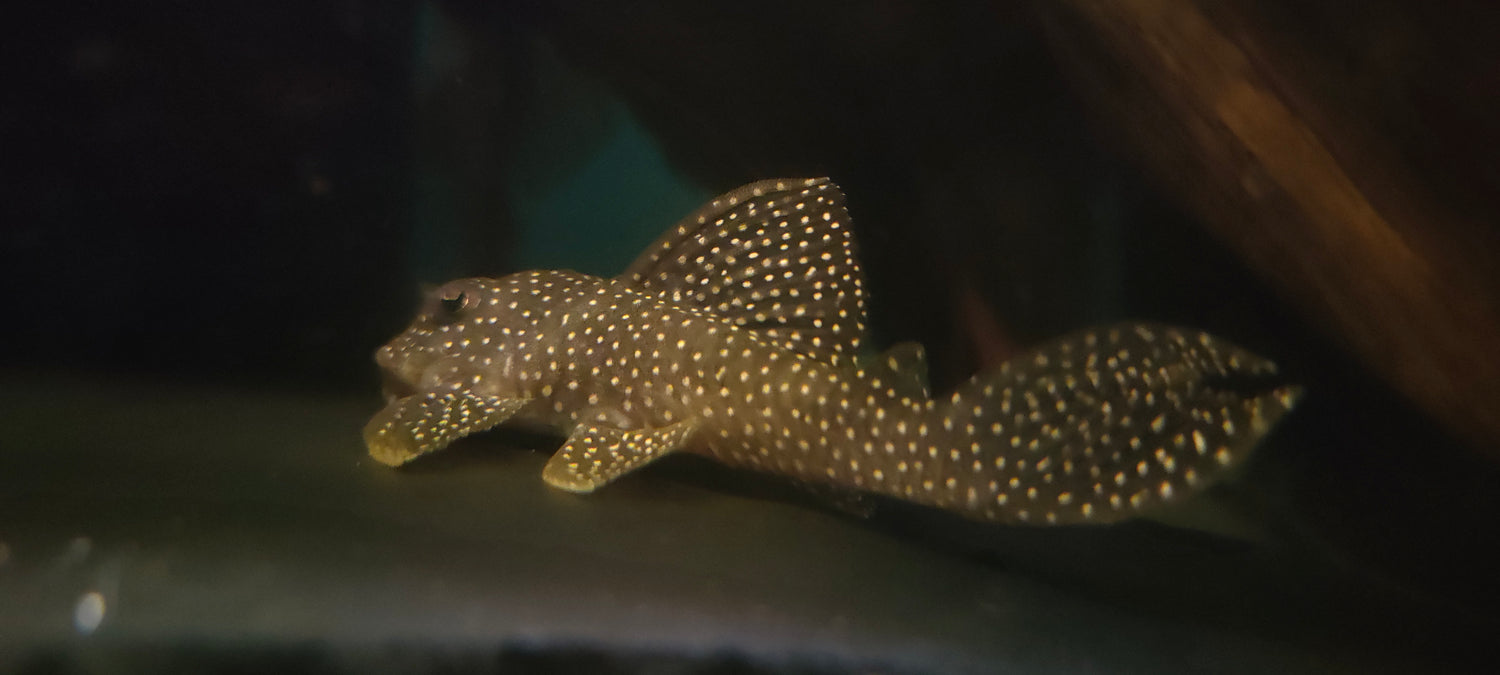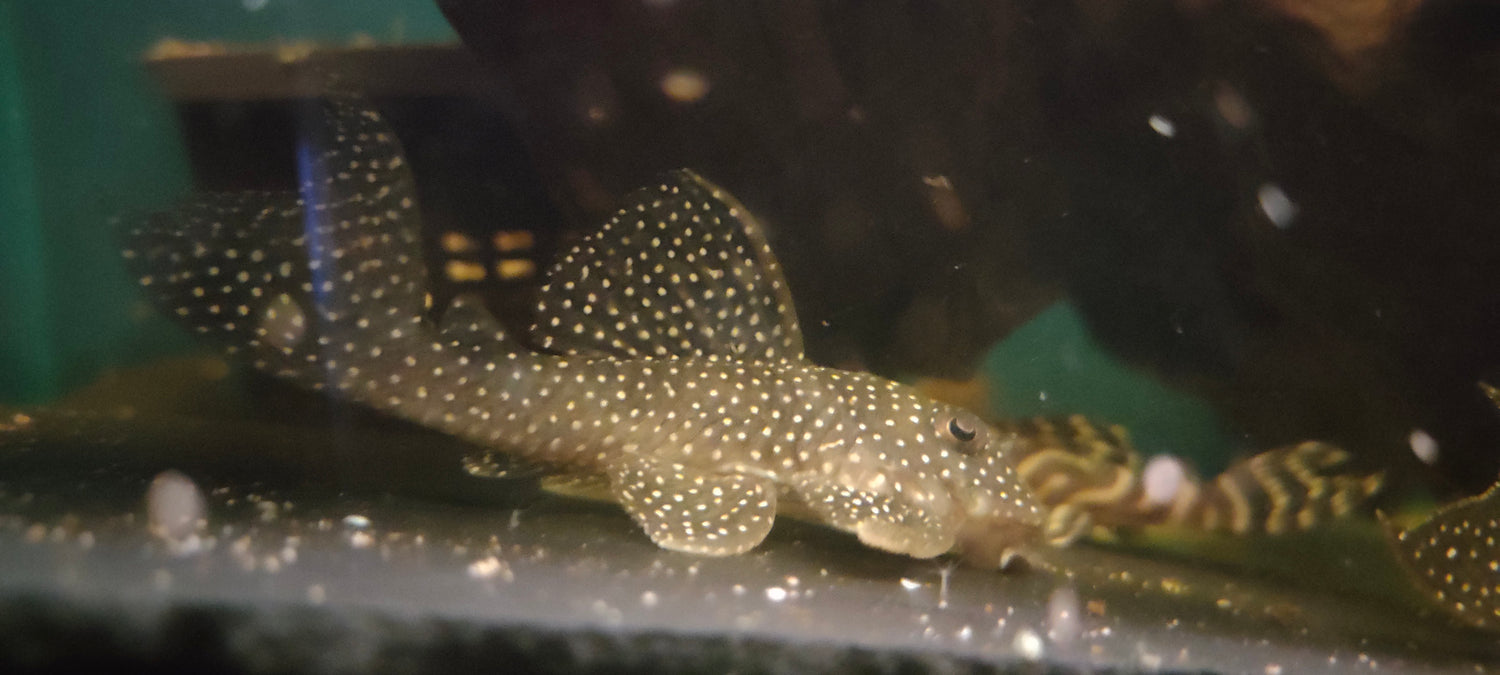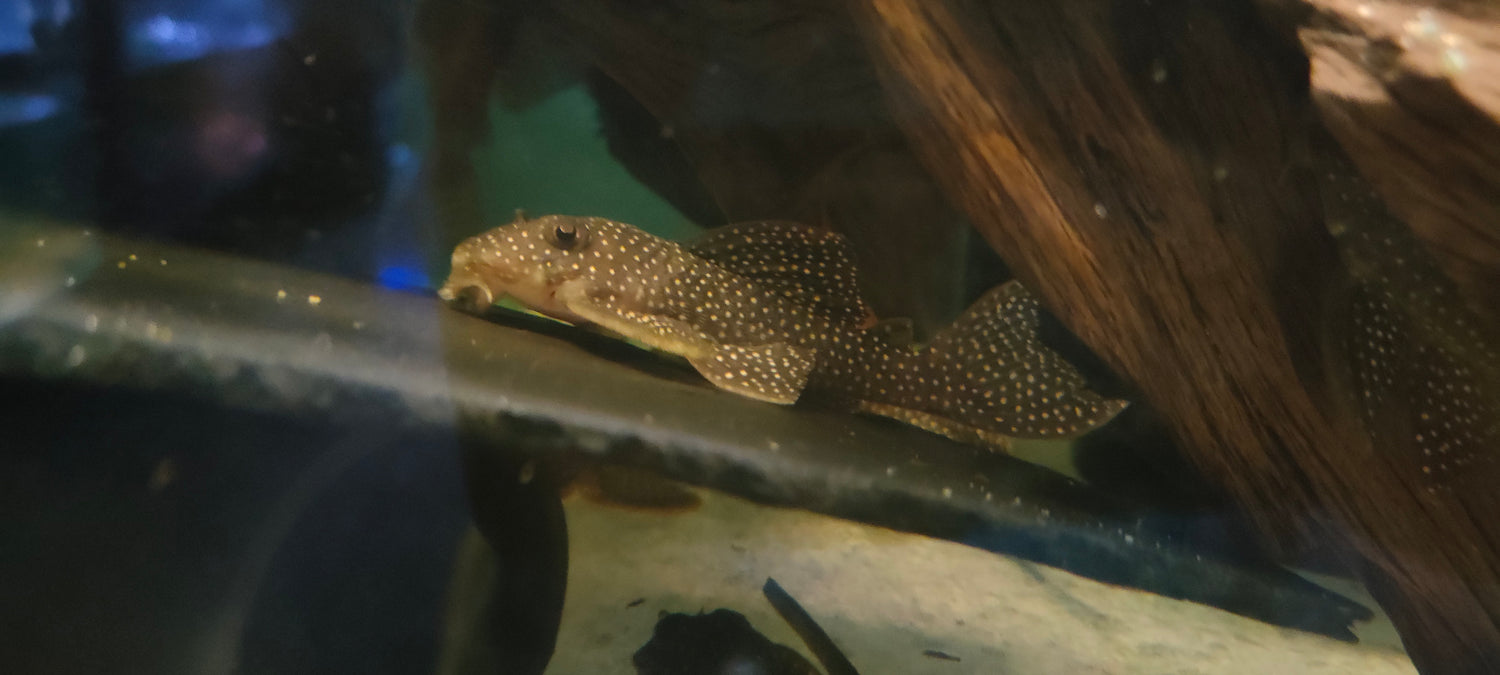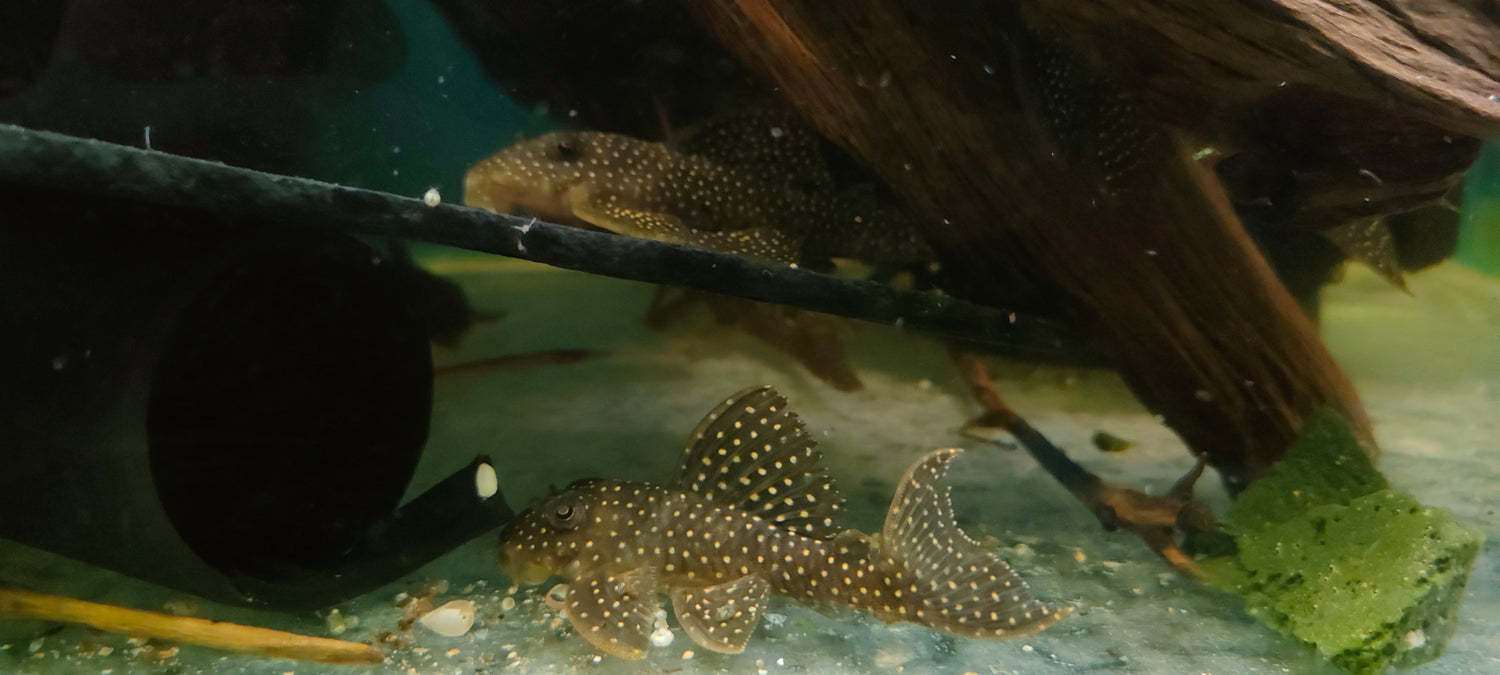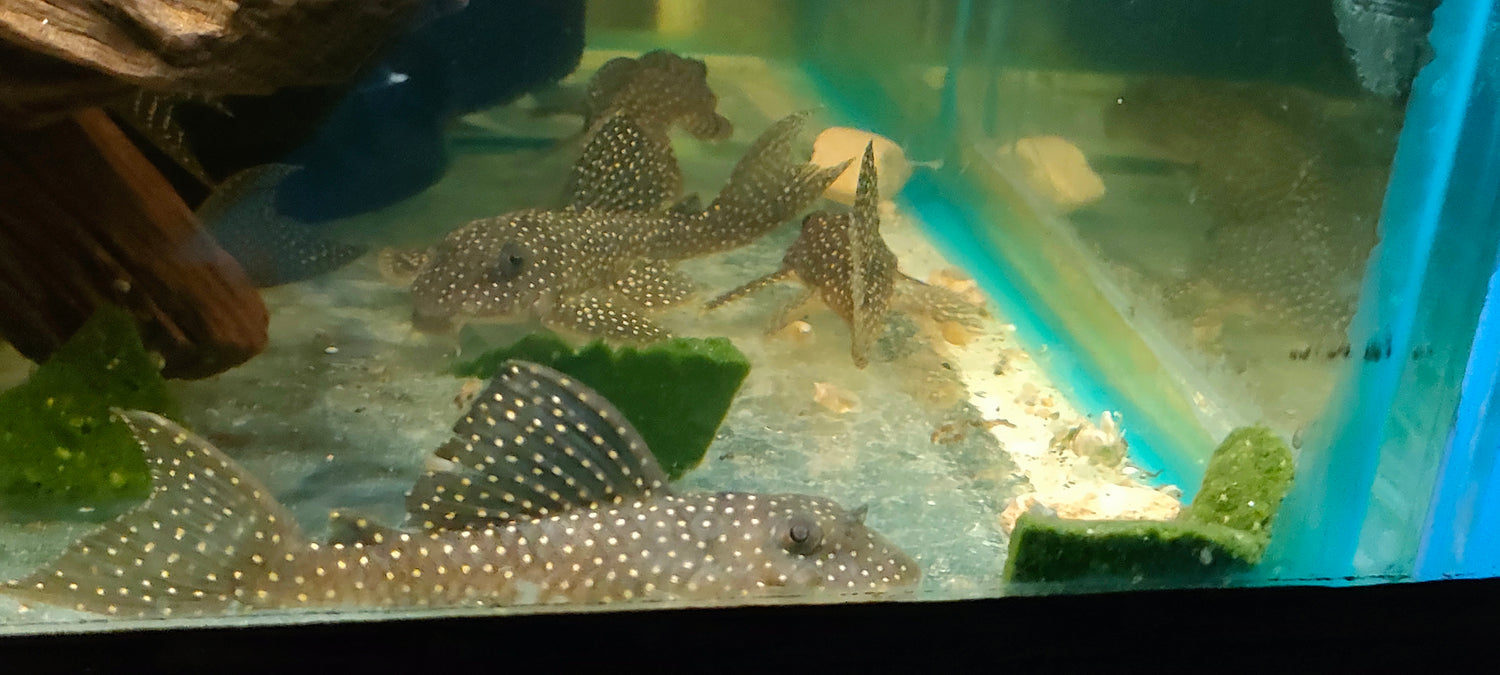In The Bag! Tropical Fish UK
L136B Hypancistrus sp.
- Regular price
- £65.00 GBP
- Regular price
-
- Sale price
- £65.00 GBP
- Unit price
- per
Couldn't load pickup availability
Before placing an order please make sure you have read our Delivery, Terms of Service and DOA/Guarantee.
Delivery: How will my fish be delivered?
Terms of Sale: What happens if something goes wrong?
By placing an order you agree to these terms.
All measurements are total length including tail.
Care Guide:
L136B
Hypancistrus sp.
Captive Bred - Indonesia
Size: 8- 10cm
Adult Size: 12 - 15cm
Temperature: 22 - 30°C, we tend to aim for 27 - 28°C.
Diet: The best all-round food we have found for them is Repashy Soilent Green which contains a mixture of algae, biofilm/aufwuchs and some fish/invertebrate protein.
Hypancistrus are not carnivorous and do best on a varied diet. They would probably best be (very generally) described as grazers/detrivores.
What peer reviewed studies have shown is that at least for the small number of species that have been examined they primarily graze on periphyton (aufwuchs) which is the complex layer of algae, microinvertebrates and other organic matter that grows on surfaces in freshwater environments.
That's not to say they don't eat other things quite happily, but an exclusively protein diet is not going to be good for them long term. Flakes, frozen and live foods like bloodworm and daphnia, algae wafers, Repashy gel foods, sinking pellets and granules are all accepted.
They do eat algae and biofilm off the glass and ornaments - we don't have to clean our glass here - although like most fish they won't do much for black beard algae or hair/filamentous algae. They will also tidy up leftover food from other fish. This makes them a great cleanup crew option for larger community fish which can help to manage snail populations and general cleanliness - just be aware that what goes in must come out.
Habitat: Easy to please. Good flow with stacks of wood and rocks with the odd pleco cave will keep these happy.
Provide some areas of low cover towards the front of the tank (such as pieces of wood, leaves or plants etc) so that they have somewhere they feel safe during feeding times; if they know where to hide, they will come out and eat actively with the rest of your fish.
Share
